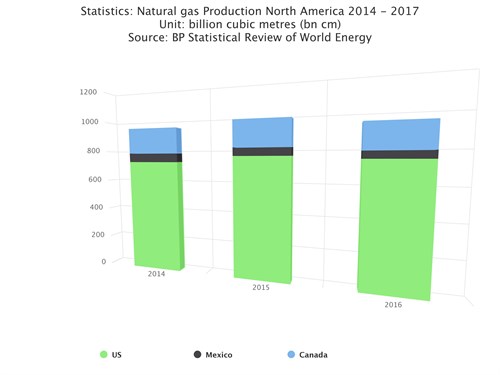Natural gas supply and consumption grow significantly from the first half of 2017 to the first half of 2018
Natural gas supply and consumption have grown significantly from the first half of 2017 through the first half of 2018. According to data from PointLogic Energy, total natural gas consumption in the Lower 48 states averaged 87.4 billion cubic feet per day (Bcf/d) during the first half of 2018, which is 8.4 Bcf/d (11%) greater than during the first half of 2017. The total supply of natural gas averaged 84.8 Bcf/d during the first half of 2018, a 7.8 Bcf/d (10%) year-on-year change.
 |
| Source: EWA |
Natural gas consumption in the first half of 2018 grew in all sectors compared with the year-ago levels:
- The largest growth occurred in residential and commercial consumption, which rose by 3.7 Bcf/d (17%) compared to the first half of 2017. Residential and commercial consumption is primarily related to heating needs, and the beginning of 2018 experienced record, prolonged cold temperatures across much of the Lower 48 states. According to the National Oceanic and Atmospheric Administration, there were about 17% more population-weighted heating degree days (HDD) during the first half of 2018 than during the first half of 2017.
- The volume of natural gas used for electricity generation (power burn) during the first half of the year increased by 2.2 Bcf/d (9%) from 2017 to 2018. Power burn is also related to temperature, as hot weather increases electricity consumption for air conditioning. However, 2018’s higher power burn was not a result of hotter temperatures; the number of population-weighted cooling degree days (CDD) in the first half of 2018 was similar to the first half of 2017. Instead, the increased power burn may have resulted from the increased buildout of natural gas-fired power plants, continued coal-to-gas switching, and the use of electric heating during the cold weather.
- The first half of 2018 saw an increase in exports over year-ago levels. Liquefied natural gas (LNG) exports and net pipeline exports to Mexico collectively increased by an average of 1.4 Bcf/d (23%) from the first half of 2017 through the first half of 2018.
The increase in natural gas supply was driven by dry production, which rose 7.4 Bcf/d (10%) from the same period last year. Production increases were facilitated by the additional pipeline capacity brought into service since June 2017, including the Leach XPress, the Rover Pipeline, and Phase 1 of Atlantic Sunrise. Net pipeline imports from Canada increased slightly, likely related to the colder weather.
Overall, consumption increased 0.7 Bcf/d more than supply. This market tightening was reflected in the large storage withdrawals this year and the current low levels of natural gas in storage relative to the five-year average.

- ExxonMobil halts 1-Bft3d blue hydrogen project in Texas
- Aramco and Yokogawa commission multiple autonomous control AI agents at Fadhili gas plant
- Ukraine will resume gas imports via Transbalkan route in November
- Mitsubishi to inject $260 MM into Brunei LNG project
- Freeport LNG (U.S.) on track to take in more natgas on Thursday after unit outage



Comments